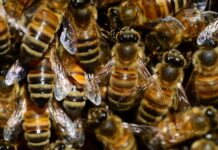A marine scientific expedition has discovered many unique, little-known creatures off the west coast of Australia – a fish with extremely long fins that rests on the seabed or translucent ophidiiformes with gel skin. Science does not yet have much information about them.
Underwater Expedition
The research expedition set off aboard the RV Investigator at the end of September to an area two and a half thousand kilometers from the west coast of Australia. The oceanographers hoped to make some exciting discoveries because the place they chose for the expedition was extremely interesting. The area is located at the border of the Pacific and Indian oceans.

The area is covered with massive, underwater mountains up to 5,000 meters high, volcanic cones, canyons, and ridges that formed during the era of the dinosaurs – 140 to 50 million years ago. Using sonar, scientists mapped the sea bed, then lowered trawls to catch unexplored animals.
Fascinating Findings
One of the scientists, Tim O’Hara, senior curator of marine invertebrates at Museums Victoria, estimates that up to a third of the species found may be new to science. These include, for example, an apparently new species of very rare ophidiiformes with tiny eyes and sticky, translucent, gelatinous skin.

Another discovery is a unique small fish related to a monkfish. With a bit of imagination, we can see a cross between a bat and pasta in it. Like the anglerfish, they have a bait at the front of the head.

Biologists captured a remarkable fish with extremely long fins. On the tips of the fins, the fish can easily and slowly move just above the bottom, where it waits for its prey. It looks like it leans on sticks.

The area is also home to wonderful sea cucumbers, many starfish and sea snails, and the hermit crab, which hides in the bodies of soft deep-sea corals instead of shells. When the ship returns to land, taxonomists will examine the collected specimens to describe new species possibly.
Source: museumsvictoria.com.au/media-releases/voyage-to-the-unknown/, photo credit: Ben Healley/Museums Victoria















